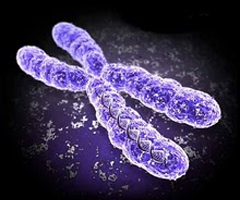disturbance


The alteration, therefore, can be a shock or a condition generated by go to or other passion: "I know that when I tell you what happened, I will have to endure your disturbance", "Calm down and put aside the alteration, which is an easy problem to solve", "His screams reflected the alteration of his mood".
A rampage, a tumult or a altercation They can also be called alteration: "The police dispersed the disturbance with tear gas", "A judge ordered the organizers of the march to be detained on the grounds that they were promoting a disturbance of public order", "A harsh lack of the Italian was the starting point of a generalized alteration that included insults and blows of all kinds".
It is common for the alteration to be associated with stress and to nervousness. When a person she is upset, has excessive reactions and is not at peace with herself, but feels annoying and annoying.
In the music, the alteration is a sign which is used for Modify the sound of a note. These signs, like the flat (which lowers the sound a semitone) or the sustained (raises the sound a semitone), change the pitch or pitch of natural sounds.
Chromosomal abnormalities

Within the numerical alterations there are the following two types:
* euploidies: the alteration occurs in a complete set of chromosomes, which is called haploid set. The organisms euploids are those that have multiples of the haploid set and these can be diploid (if your chromosome number equals two) or polypoid (If they have more than two chromosomes, although it can also be specified if it is a triploid, a tetraploid, a pentaploid, etc);
* aneuploidies: When the alteration affects one or very few pairs of chromosomes, the organisms are called aneuploid if they have extra or missing chromosomes. Within the aneuploidy alterations, the so-called nullisomies they are especially rare, since they are usually lethal in normal diploid organisms. The monosomies They can also cause death, although in humans it can unleash the syndrome Turner's if it affects the X chromosome.
In many cases, chromosomes break spontaneously, or induced by mutagenic agents. Although there are mechanisms to repair them, which manage to reunite the fragmented parts, sometimes they fail and cause chromosomal mutations of a structural type. Among these alterations it is possible to distinguish duplications, the deletions, the translocations and the investments.
It is known by the name of mutation the mechanism by which new variants appear in genes due to random errors that occur in hereditary material, and change allelic form. A mutation can take place both in germ cells (precursors and gametes; this type of alteration is the only one that can be transmitted by inheritance) as well as in somatic cells (in this case, despite not transcending the generation in which occurs, may be related to cancer stature disorders).
Leave a Reply